Annadata Pradhan Mantri The Indian government's Aay Sanrakshan Yojana, popularly known as PM Asha Yojana, was unveiled in September 2018. The PM Asha Yojana's (PM Asha Scheme in Hindi) main goal is to help farmers who are struggling financially as a result of crop failure.
The government has made yet another significant move to support the farmer-friendly plan.
A comprehensive program known as PM Asha Yojana (Pradhan Mantri Annadata Aay Sanrakshan Abhiyan) was created to make sure that farmers receive a fair price for their goods.The program is a component of the federal government's pledge, made in the Union Budget of 2018, to pay farmers fairly for their goods.A rise in the Minimum Support Price (MSP), which will be translated into farmer income through a strong procurement mechanism created in cooperation with the States, would supplement this.
The program in reaction to widespread farmer agitation caused by a number of significant agricultural commodities trading below their MSPs.
Objectives of the PM-ASHA Program | PM-AASHA Program
The following goals are part of the Prime Minister Annadata Income Protection Campaign:
To improve the procurement process in order to guarantee fair rates for farmers and their products.
Improving the physical acquisition of copra, oilseeds, and pulses.
Increasing the Minimum Support Price to close the gap.
To fill loopholes and strengthen the procurement system.
A significant boost in farmers' revenue.
PM-ASHA Scheme Components | PM-AASHA Scheme Components.
The three elements outlined in the PM Aasha scheme are intended to boost agricultural output and lower cultivation costs, hence boosting and safeguarding farmers' long-term income.
PSS, or Price Support Scheme.
(PDPS) Price Deficiency Payment Scheme.
The Private-Procurement and Stockist Scheme (PPPS) is under pilot.
Price Support Scheme (PSS) | The following are PSS's characteristics:
Under the Price Support Scheme (PSS), Central Nodal Agencies will physically procure pulses, oilseeds, and copra with the assistance of State Governments.
The National Agricultural Cooperative Marketing Federation of India (NAFED) and Food Corporation of India (FCI).
The cost of acquisition as well as any losses must be covered by the central government.
In addition, for qualified crops, the government will purchase 25% of farmers' marketable surplus.
To support agencies' purchases from farmers, the central government has set aside approximately Rs 16,000 crore in the form of bank guarantees.
Payment for Deficit in Value (PDPS) Features of the Price Deficiency Payment Scheme (PDPS) include the following:
Under the Price Deficiency Payment Scheme (PDPS), States will pay the difference between mandi prices and MSP.
All oilseeds will be subject to the PDPS. Physical crop procurement won't take place.
Pre-registered farmers will receive the difference between the MSP and the selling or model price for their produce in informed markets directly through a transparent auction process.
Through DBT, all payments will be made straight to the farmer's registered bank account.
Private Stockist and Procurement Pilot Scheme (PPPS) | PPPPSThe Private Procurement and Stockist Scheme (PPPS) pilot program has the following components:
The parameters can be widened. Together with the government, private enterprises will buy oilseeds.
As a result, it has been determined that in addition to PDPS, States may implement the Private Procurement Stockist Scheme (PPSS) in particular district/s APMC(s) with private stockists or cover several oilseeds crops for which MSP has been notified.It will take the place of PSS/PDPS in pilot districts because it is comparable to PSS in that it requires the actual physical procurement of the notified commodity.
PM-ASHA Scheme Operation | PM-ASHA Scheme OperationThe flagship program PM Asha (Pradhan Mantri Annadata Aay Sanrakshan Abhiyan) makes sure farmers receive the Minimum Support Price (MSP).
This is among its components:
The Price Deficiency Payment Scheme (PDPS) and the Private-Procurement and Stockist Scheme (PPSS) are two new schemes that are being piloted in addition to the existing Price Support Scheme (PSS), which has undergone certain adjustments.
In accordance with the PM-ASHA program, States/UTs are given the choice to select either PSS or PDPS during a specific procurement season for a particular oilseed crop that is acquired for the entire State.
A State may only implement one PSS or PDPS system for each commodity. Additionally, with the assistance of private oilseeds stockists, States can test out PPSS in a few APMCs of districts/districts.
However, the Ministry of Textiles' programs are used to purchase cotton, while the current food and public distribution schemes (PDS) are used to purchase wheat, paddy, and coarse cereals.
As a result, it aids farmers in obtaining improved MSP, which offers a sufficient return on production costs.
Benefits of PM AASHA Scheme and PM Asha Yojana
The following are advantages of the PM-Asha program:
A creative, MSP-plus solution to the issue of uncompensated prices is the PM-ASHA plan.
The three distinct parts of the system will close any holes in the compensation and crop procurement mechanisms.
By raising farmer income, it will also aid in restoring the rural economy.
By raising the price of oilseeds, the plan can guarantee agricultural diversification and lessen land and water stress.
With the advent of PM-Asha, physical acquisition, storage, and disposal are no longer required.
Concerns and Challenges of PM-Asha Scheme | Concerns and Challenges of PM-AASHA Scheme
Following are the concerns and challenges of the PM-Asha scheme:
The country does not have a strong infrastructure for procurement mechanisms for rice and wheat.
According to the report of a Central Government committee, only 6% of the country's farmers benefited from the MSP.
Similarly, according to a 2017 study by KS Aditya, only 24% of households were aware of the MSP. Further research revealed that MSPs were applicable only in a few states.
In the 2016 review report by NITI Aayog, 79% of farmers expressed dissatisfaction with the MSP system.
Due to payment delays, poor infrastructure at procurement centers, a distance from centers, and a delay in the release of MSP rates, farmers are not happy.
According to the assessment of NITI Aayog, long-term procurement facilities in several states are 'inadequate'.
Additional recent firsts involving farmers Other current Farmers-related initiatives.
The central government has recently undertaken further farmer-related programs.
By 2022, the Central Government promises to have doubled farmers' income.
Therefore, increasing production, lowering cultivation costs, and improving post-harvest administration, including market structure, are the government's key priorities.
There have already been several market corrections. Examples include the Model Contract Farming and Services Act of 2018 and the Model Agricultural Produce and Livestock Marketing Act of 2017. Many states have taken legislative steps to implement these.
To ensure that farmers receive a fair price for their produce, the central government is developing a new market structure.
The establishment of Rural Agriculture marketplaces (GRAMs) to support 22,000 retail marketplaces close to the farm gate, competitive and open wholesale trading in APMCs through eNAM, and a strong export policy supporting farmers are a few examples of these.
Moreover, several Other pro-farmer measures include the Pradhan Mantri Fasal Bima Yojana's implementation. Paramparagat Krishi Vikas Yojana implementation. distribution of Soil Health Cards is being implemented.
The unprecedented declaration of a minimum support price based on the formula of 1.5 times the cost of cultivation shows the Central Government's dedication to farmer welfare.
PM-Success How well it is put into practice will define hope. Farmers should be able to register with the government easily. The government must also take strong measures to stop merchants from manipulating pricing. The business lobby in the mandis should be broken apart by the Center first. This can be done by joining the mandis together to increase competitiveness.



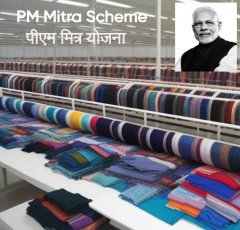
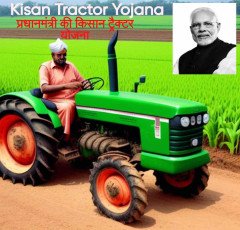
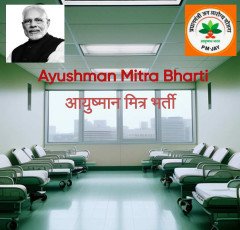
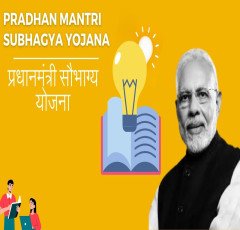
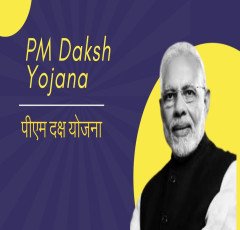

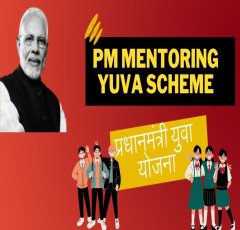

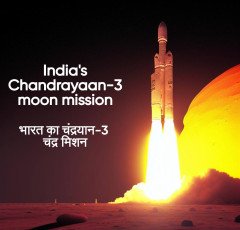
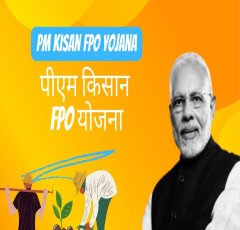
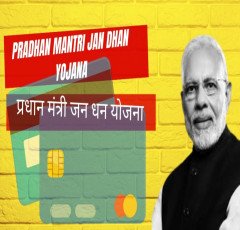



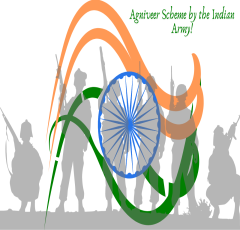






 One World Collection
One World Collection  Dual USB Car Charger
Dual USB Car Charger  Men Clothing
Men Clothing  Online Marketing
Online Marketing  Favorite Company (Cuelinks)
Favorite Company (Cuelinks)  Dell Laptop
Dell Laptop  The Secret Email System
The Secret Email System  RPM 3.0
RPM 3.0  Best Sellers On Amazon
Best Sellers On Amazon  Essentials for Gamers
Essentials for Gamers  Hello Theme
Hello Theme  Women Fashion
Women Fashion  4k Projector For Home
4k Projector For Home  Home Decor Items
Home Decor Items  Duke T Shirts
Duke T Shirts  HP Laptop
HP Laptop  Hanging Lights For Living Room
Hanging Lights For Living Room  The Click Engine
The Click Engine  Air Purifier for Home
Air Purifier for Home  Kitchen Daily Use
Kitchen Daily Use  Best Robotic Vacuum Cleaners
Best Robotic Vacuum Cleaners  Crocs
Crocs  Hot Bags For Pain Relief
Hot Bags For Pain Relief  Kitchen Tap
Kitchen Tap  Artificial Intelligence
Artificial Intelligence  Unlimited access to classes on illustration, photography, design, film, music
Unlimited access to classes on illustration, photography, design, film, music  Acer Laptop
Acer Laptop  Only For The United States
Only For The United States  Samsung Mobile
Samsung Mobile  BEST SELLER TOP10
BEST SELLER TOP10  SOFAS
SOFAS  Sennheiser
Sennheiser  Unreal Engine 5 For Beginners Learn The Basics Of Virtual Production
Unreal Engine 5 For Beginners Learn The Basics Of Virtual Production  Digital Voice Recorder
Digital Voice Recorder  Motion Sensor Light
Motion Sensor Light  Wireless Bluetooth Earphones
Wireless Bluetooth Earphones  Apple iPhone
Apple iPhone  NordLocker
NordLocker  All Wireless Products
All Wireless Products  Healthy Ingredients
Healthy Ingredients  Online Technology Classes
Online Technology Classes  NordPass
NordPass  Smart Watches
Smart Watches  Best Phone
Best Phone  Rakhi
Rakhi  ASPINAL LONDON
ASPINAL LONDON  Door Handle Collection
Door Handle Collection  Amazon Best Selling Products
Amazon Best Selling Products  Puma (Clothing & Accessories)
Puma (Clothing & Accessories)  Wireless Gaming Mouse
Wireless Gaming Mouse  Realme Smart Phone
Realme Smart Phone  Best Home Appliances
Best Home Appliances  ELECTRONIC ACCESSORIES
ELECTRONIC ACCESSORIES  Graphics & Design
Graphics & Design  Smart Doorbell
Smart Doorbell  Stylish Sneakers by Red Tape
Stylish Sneakers by Red Tape  iPhone cable
iPhone cable  1150+Trendy kids coloring pages Bundle
1150+Trendy kids coloring pages Bundle  Adidas Shoes
Adidas Shoes  TitTok Revolution
TitTok Revolution  SEO Checklist
SEO Checklist  Pet Care Products
Pet Care Products  Bathroom Mirrors
Bathroom Mirrors  Wristbands
Wristbands  Best Selling Books
Best Selling Books  Echo Dot - Smart speaker with Alexa
Echo Dot - Smart speaker with Alexa  Top Rated From Amazon
Top Rated From Amazon  LCD Writing Tablet
LCD Writing Tablet  Wall Lamp
Wall Lamp  Creative Brief For Video Shoot
Creative Brief For Video Shoot  NordVPN
NordVPN  Prime Video
Prime Video  ASUS Laptop
ASUS Laptop 


















